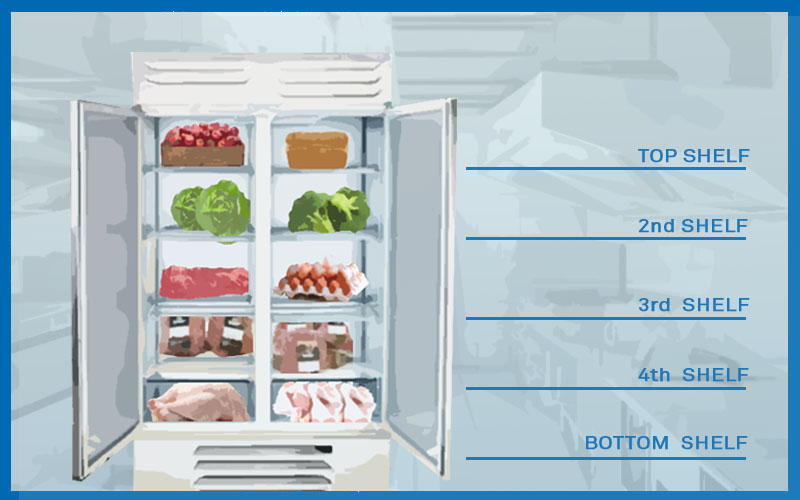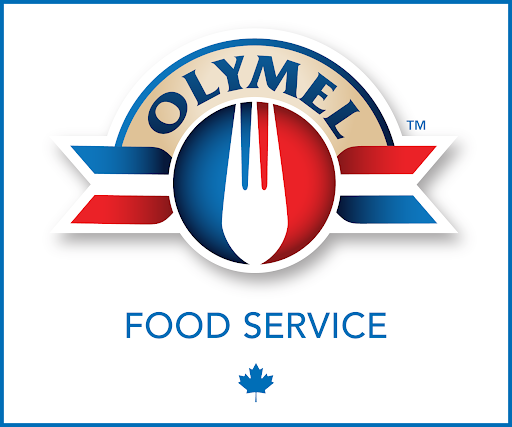Smart fridge management to reduce waste

Up your storage game!
Proper organization of fridge or cold room space helps prolong the shelf life and freshness of foods. Better still, by reducing waste and losses, you’ll increase your profits. Here are 5 things to watch out for in order to optimize the conservation of foods and limit food waste.

Top shelf: foods ready to serve that require no cooking
Second shelf: foods cooked to 57°C (135°F) and kept warm.
Third shelf: foods cooked to 63°C (145°F) like whole seafood, whole cuts of meat and eggs that will be served immediately
Fourth shelf: foods cooked to 68°C (155°F) like ground, injected or tenderized meat or eggs that will be kept warm
Bottom shelf: foods cooked to 74°C (165°F) like poultry
Reduce food waste with those reminders
1. Temperature
Refrigerator temperature must be maintained between 1 and 4°C. Avoid overloading the fridge as this may impede air circulation and create warm zones where bacteria can develop.
2. Labelling
Label products upon receipt indicating use-by dates. That way you will quickly see which foods needs to be used first.
3. Storage
Foods should be arranged on shelves according to their cooking temperature, the lowest on the highest shelf. In this manner you avoid juices or other liquids that come from foods cooked at high temperature contaminating foods that will never reach this temperature in cooking.
4. Rotation
The first-in, first-out system (FIFO, or PEPS in French) guarantees that foods closest to their use-by date are used first. To facilitate management, organize foods by type, placing the most recently arrived foods behind the others. This will ensure older foods don't get forgotten in the back of the fridge.
5. Disposal
Inspect fridge contents regularly to look for foods past their use-by date or that are no longer safe for consumption. All foods where the odor, colour or flavour has deteriorated should be thrown out. Foods left out of the refrigerator for more than two hours should not be consumed or returned to the refrigerator.


 )
)

